Press Trust of India
The Press Trust of India was founded the same year India gained independence. Over the decades, it has remained a silent witness to the nation’s unfolding story. Its role as a news agency is both archival and active, capturing today's events as tomorrow’s historical reference.


Interactive map
We were invited to reimagine PTI’s presence in a rapidly changing digital environment. Our mandate was both strategic and systemic. It included designing two front ends: a high-utility B2B platform for newsroom professionals, and a public-facing B2C site for brand storytelling. Our work covered interface design across text, photo, and video workflows, scalable multilingual support, and tools built for speed and simplicity in high-pressure newsrooms.

3 column grid
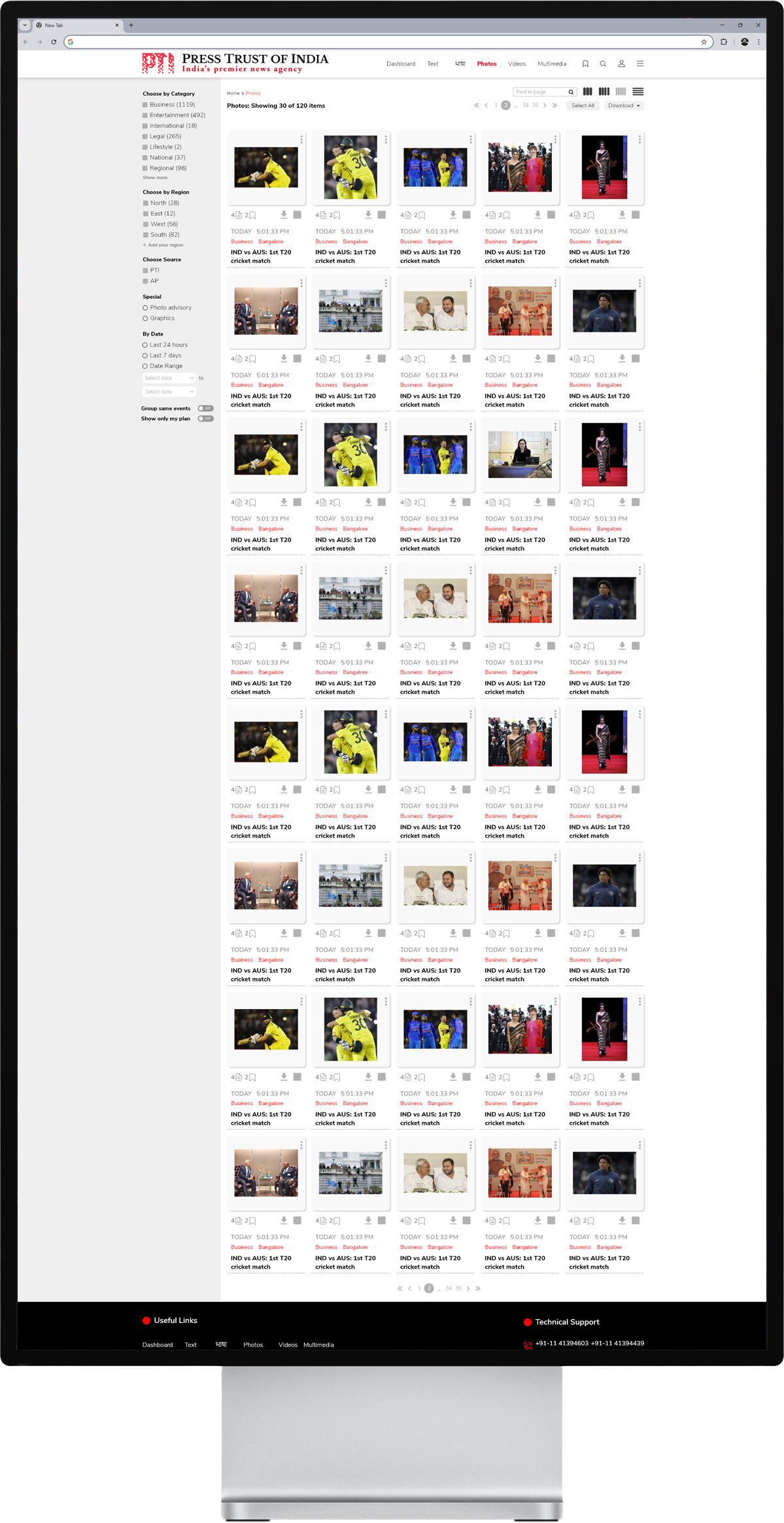
5 column grid

Photo detail page
Each day, PTI publishes over 800 text stories in multiple languages through a vast network of over 500 reporters and 400 stringers.
Their photo division works in parallel, covering not just breaking news but building a visual memory of the country. Our system had to reflect this scale, without making it feel overwhelming.
We focused on editorial clarity: filters, sort features, and clustering by event helped editors navigate daily volume. In text listings, event tagging helped group stories from recurring rallies or long-running assignments. Each story also surfaced its related photos and other media elements.

Live events & schedule
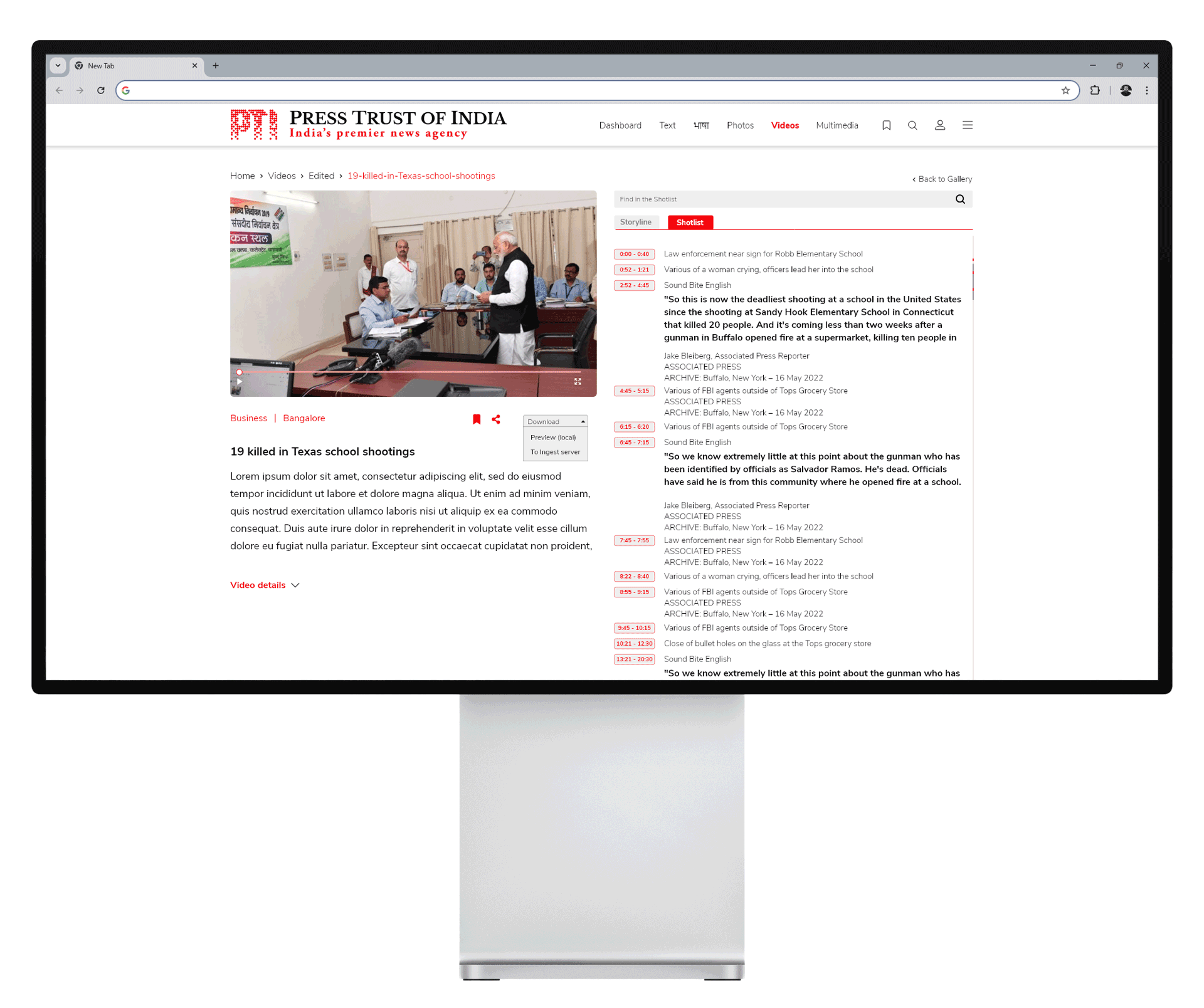
Transcript search feature
The new video section (above) had to function both as a live broadcast layer and an archive-ready platform. Videos were transcribed, indexed and searchable; a single word could pull up relevant moments and mark them visually on the timeline, allowing producers to jump to what they needed instantly. A built-in broadcast schedule gave producers advance visibility into upcoming live events, enabling better editorial planning.
The public version of the site (below) offered a curated glimpse into PTI’s content, optimized for lighter use cases such as casual previewing and quick mobile access.
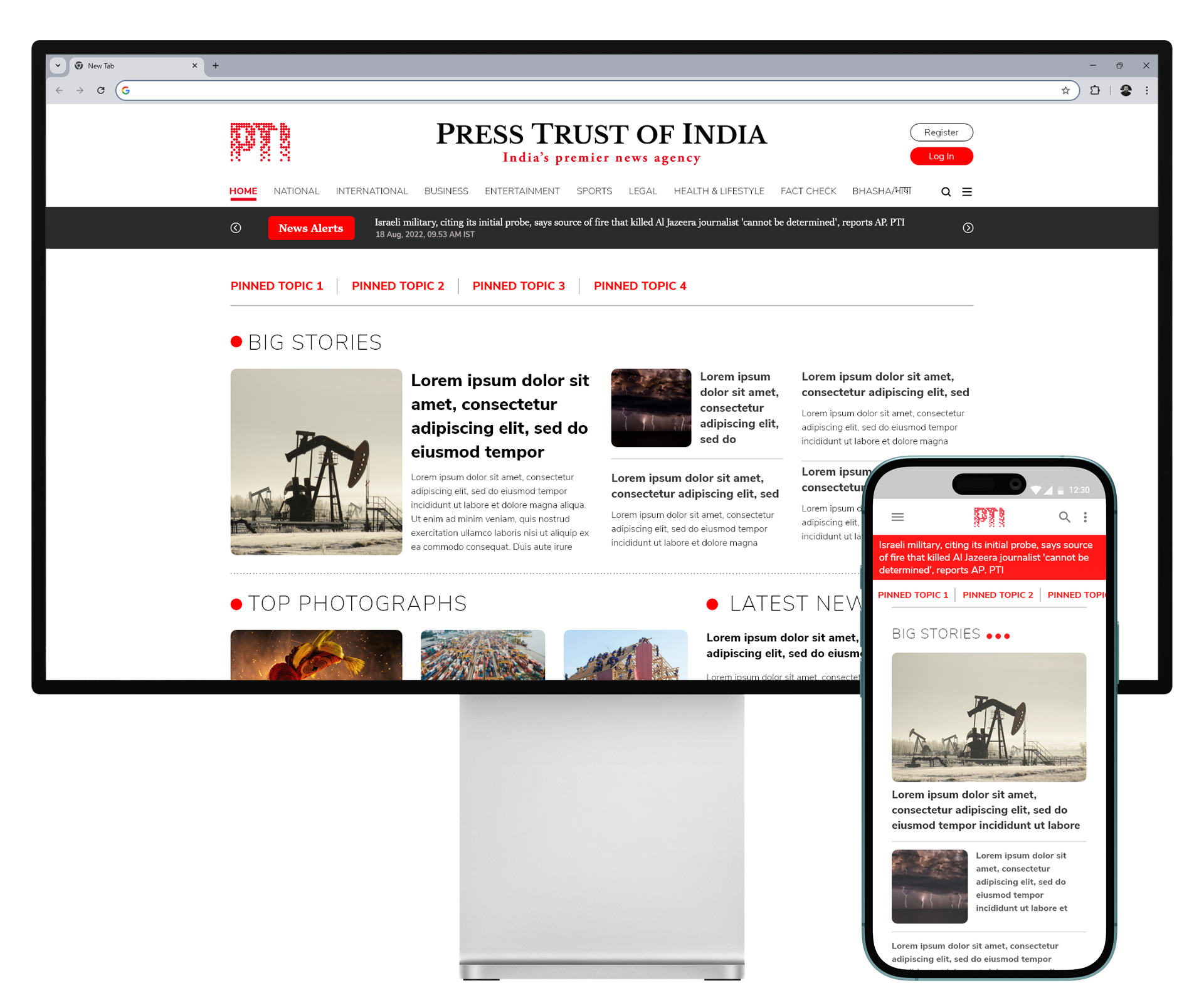
B2C home page

B2C home page
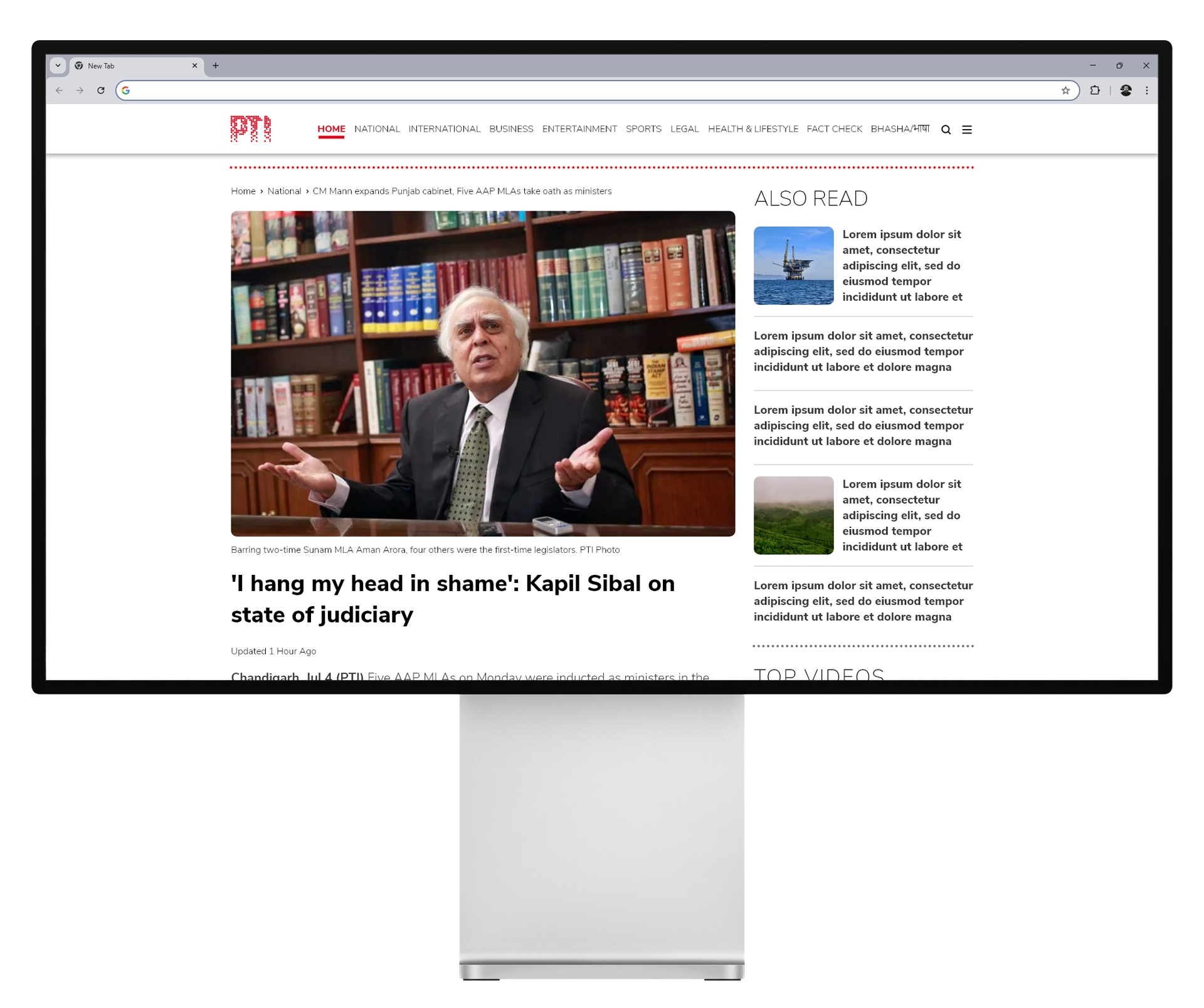
B2C article
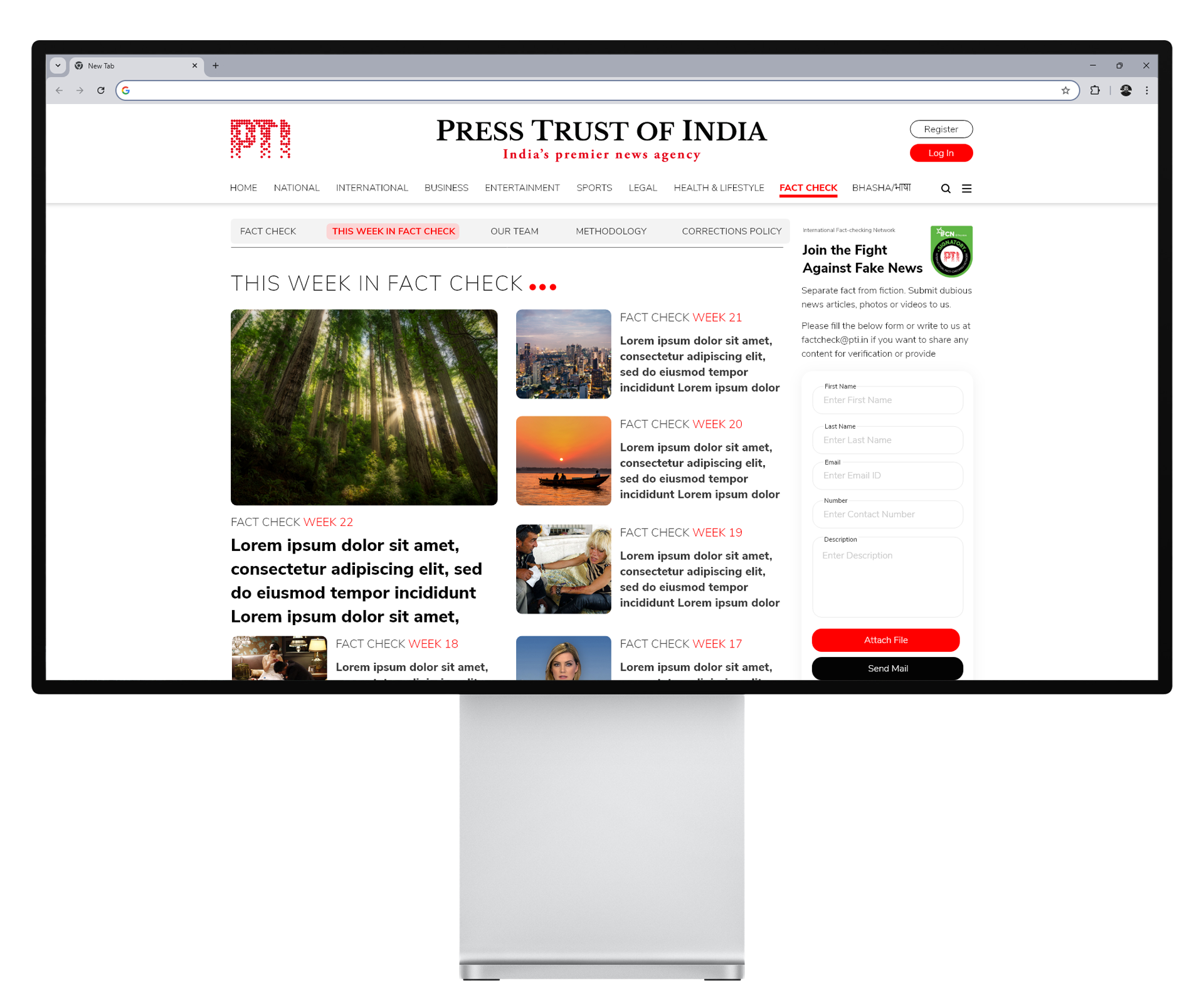
Fact check articles

Fact check news
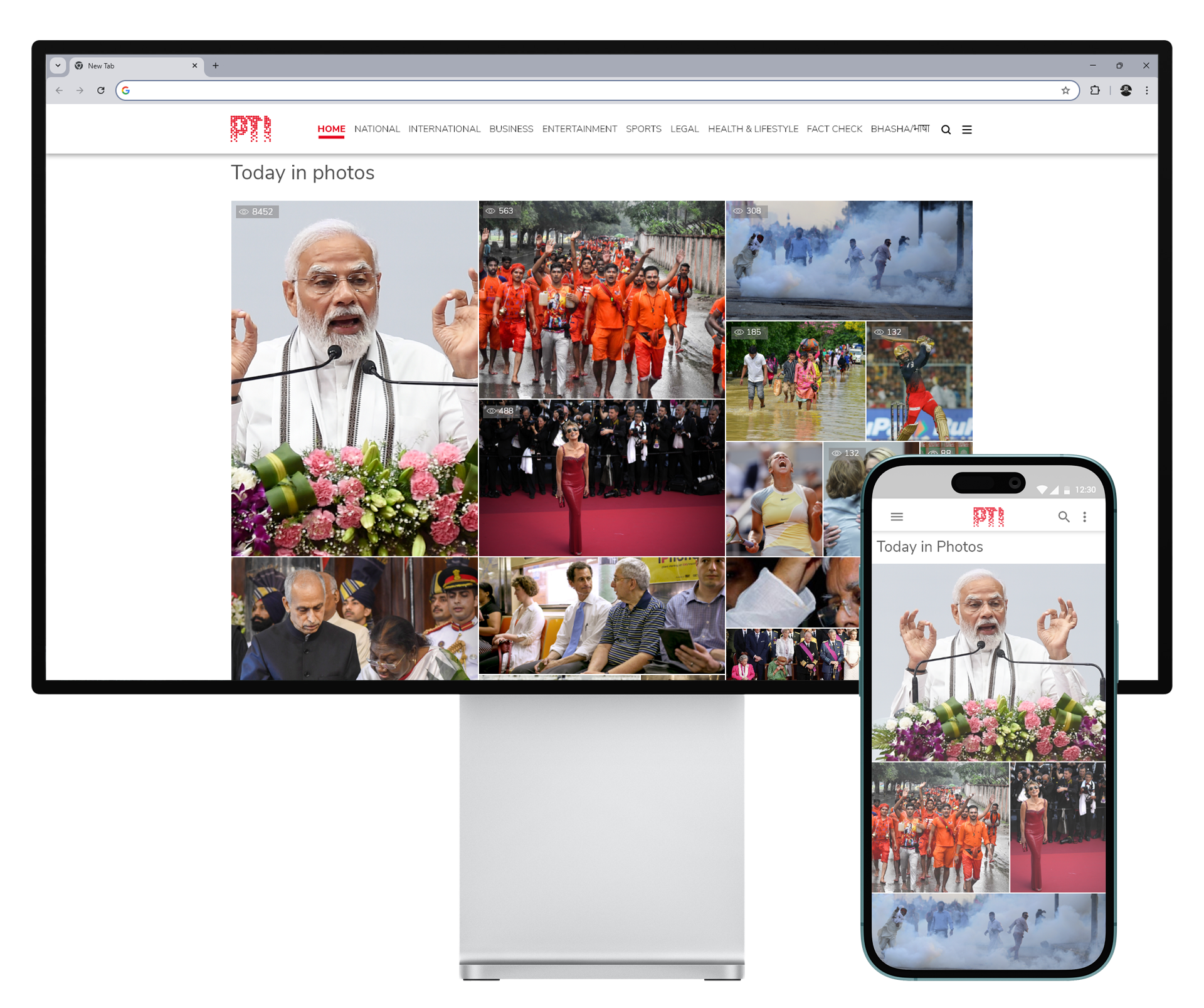
Trending photos
A new “Explore PTI” section brought forward historic imagery, some dating back to the very founding of the republic. This was more than a gallery. It served as a curated invitation to explore PTI’s historic archive and a subtle nudge toward deeper engagement through subscription.




We also extended the brand beyond the screen, through physical collateral (above) like visiting cards, letter heads, vehicle signage and stickers for cameras and drones and modular graphic assets for small newsrooms (below).






In a landscape where speed often overrides accuracy, our work with PTI focused on building systems that support both. The result is a platform and a brand designed not to draw attention, but to hold steady under pressure.
